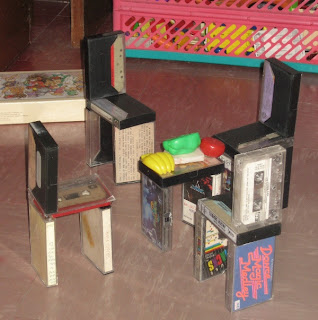http://news.yahoo.com/s/space/20070529/sc_space/28newexoplanetsdiscovered28 New Exoplanets DiscoveredJeanna Bryner
Staff Writer
SPACE.com
HONOLULU-Astronomers have discovered 28 new planets outside of our solar system, increasing to 236 the number of known exoplanets, revealing that planets can exist around a broad spectrum of stellar types-from tiny, dim stars to giants.
"We added 12 percent to the total in the last year, and we're very proud of that," said one of the study team members Jason Wright of the University of California at Berkeley. "This provides new planetary systems so that we can study their properties as an ensemble."
The planets are among 37 new objects spotted within the past year. Seven of the objects are failed stars called brown dwarfs, with masses that dwarf the largest, Jupiter-sized planets but too small to sustain the nuclear reactions necessary for stellar ignition.
John Johnson of the University of California at Berkeley and his colleagues presented the findings here today at a meeting of the American Astronomical Society (AAS).
Astronomers don't directly spot extrasolar planets, but rather look for stellar wobbles caused by orbiting planets. The planet's size and distance from the parent star affect how strong or weak of a wobble, and more sophisticated techniques for measuring the stellar wobbles has led to an ever-lengthening list of such outer planets. Now they can detect wobbles of a meter per second compared with the 10-meter limit just 15 years ago.
Planet profiles
One of the exoplanets, a red M dwarf just 30 light-years from Earth, was discovered two years ago, but recent observations have allowed astronomers to pin down its mass, radius and density. The ice-giant planet circles the star Gliese 436 (GJ 436) and has a radius and density that are surprisingly similar to that of Neptune.
Weighing in at 22.4 Earth-masses, the exoplanet is the first Neptune-sized planet observed to transit a star. The previous record holder, dubbed HD 140926b, weighed in at 100 Earth masses, and Jupiter is 320 Earth masses.
"[Gliese 436b] must be 50 percent rock and about 50 percent water, with perhaps small amounts of hydrogen and helium," said head of the planet-search team Geoffrey Marcy, also of UC Berkeley. "So this planet has the interior structure of a hybrid super-Earth/Neptune, with a rocky core surrounded by a significant amount of water compressed into solid form at high pressures and temperatures."
Its 2.6-day orbit around GJ 436 means the hybrid planet circles very close to its star, just 3 percent of the Sun-Earth distance, and making it a hot Neptune. Unlike most giant planets found with such close ties to their stars, this planet has an eccentric orbit. The elongated orbit suggests the parent star could have another planetary companion with a more distant orbit.
"I'm sure people will immediately follow up and try to measure the atmospheric composition of this planet," Wright said.
GJ 436 is an M star and 70 percent of all stars are considered M-type stars, so finding that these dim stars can support planets could mean a boon for planet hunters.
Bigger is betterAt least four of the newly spotted planets belong to multiple-planet systems, supporting the idea that at least 30 percent of all planet-parent stars have more than one planetary companion. Since smaller planets and those outside our solar system are trickier to detect, Wright predicts this percentage will continue to rise as detection methods improve.
And three of the just-discovered planets circle stars that boast masses between 1.6 and 1.9 times that of our Sun. The stars are A- and F-type stars, which are typically difficult to detect because they rotate fast and have pulsating atmospheres.
Due to their extreme rotational velocities and high temperatures, A and F stars only jitter slightly from orbiting planets and so surveys can only pick up wobbles from super-massive planets and brown dwarfs in short-period orbits around these stars.
Johnson discovered that "retired" A stars, which have nearly burned all of their hydrogen and remain stable for a short stint, have slower rotation rates and are not so hot. That makes it easier for astronomers to measure their planet-caused wobbles.
Unlike planets orbiting M-type stars, these exoplanets tend to orbit at least 0.8 astronomical units (AU) from the parent stars.
For this reason, massive stars are more likely to harbor Jupiter-sized planets than are lower-mass stars, Johnson said. And retired A-type stars are twice as likely to support planets compared with Sun-like stars, which Johnson attributes to the fact that bigger stars start out with more material in their disks to feed planet building.
So these massive stars also could represent a treasure trove for places to spot new exoplanets, along with the M stars, Johnson said.



















































